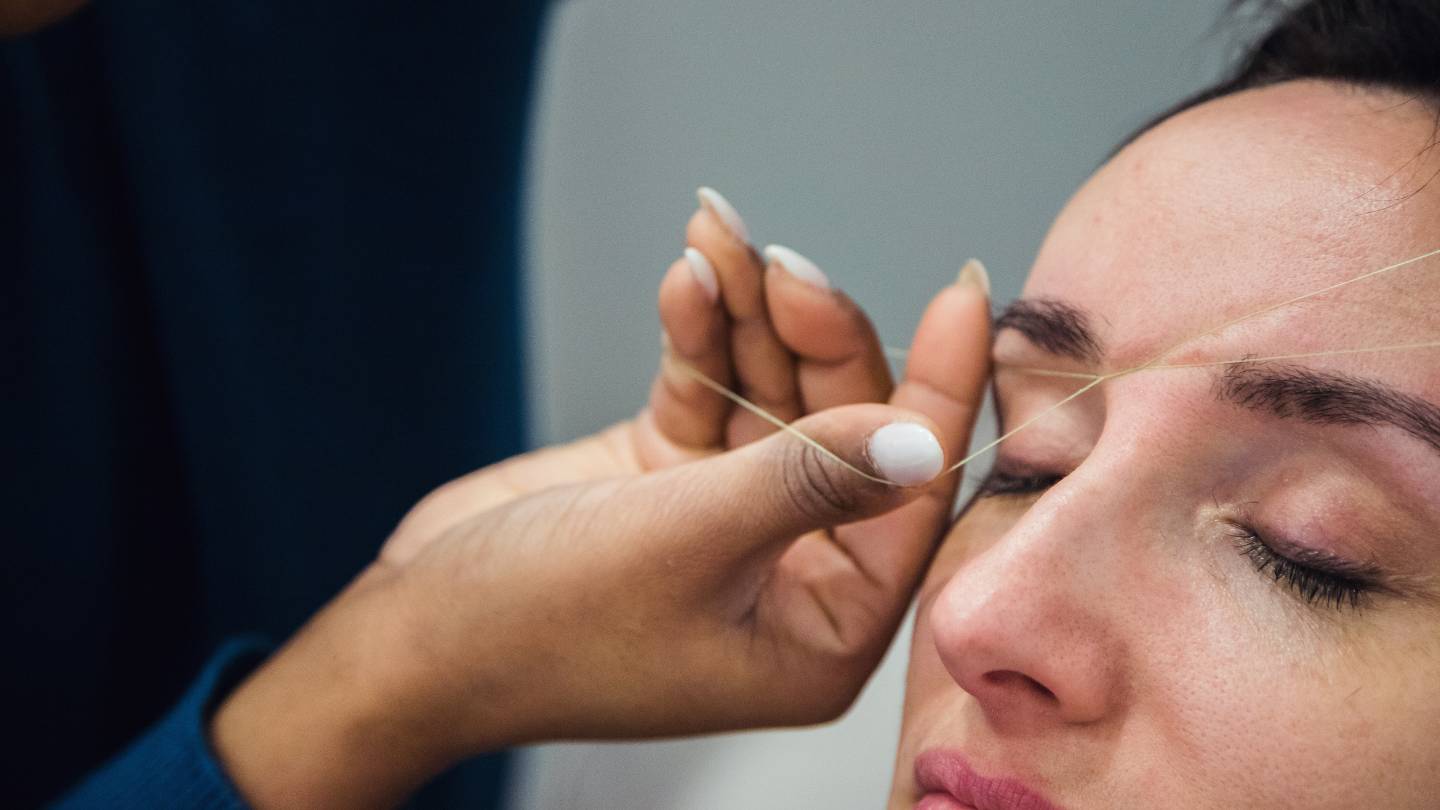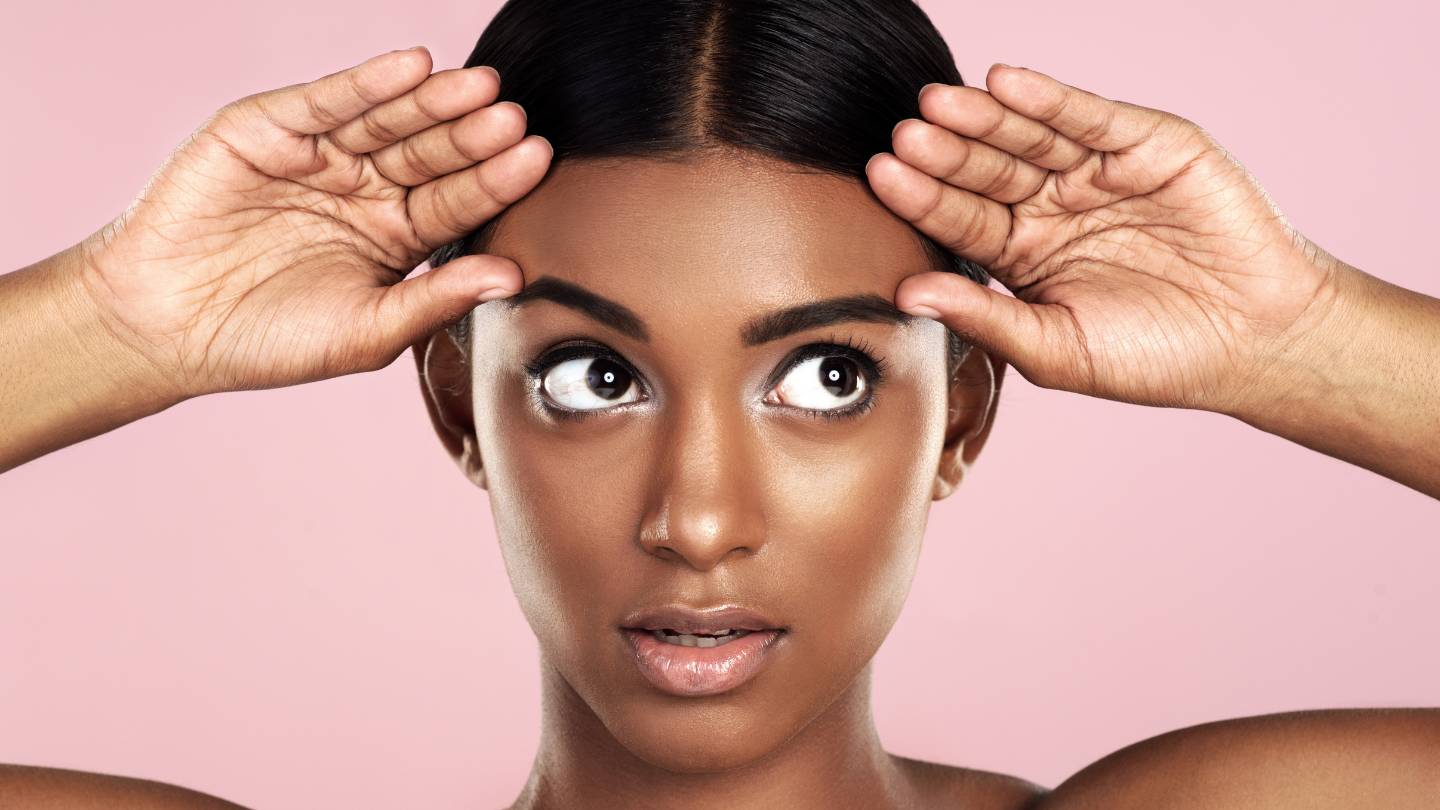Eyebrow feathering, or microblading or feather touch brows, has become a popular cosmetic procedure for achieving fuller, more defined eyebrows. This semi-permanent method enhances the appearance of natural brows using fine strokes to simulate real hair.
The result is a natural, long-lasting, low-maintenance brow that can frame your face elegantly. In this guide, we will cover the process of eyebrow feathering, from the consultation stage to aftercare, risks, and everything you need to know about its benefits.
Let’s get straight to the point.
Eyebrow feathering, or microblading, is a semi-permanent cosmetic procedure that uses fine strokes to deposit pigment under the skin, mimicking natural eyebrow hairs. The process begins with a consultation to design the desired brow shape, followed by numbing and applying the pigment with a specialised tool.
Aftercare, including keeping the area dry and avoiding makeup, is essential for healing and longevity. Feathered brows last 12-18 months and offer a natural, low-maintenance alternative to daily brow grooming.
Risks include infection, pigment allergies, and unsuitability for certain skin types. Costs range from $500 to $1,500.
What Is Eyebrow Feathering?
Eyebrow feathering is a cosmetic procedure that involves depositing pigments into the skin using a hand-held tool. The process creates fine, hair-like strokes that mimic the natural appearance of eyebrow hairs. This method enhances their brows’s shape, fullness, and definition. Compared to traditional eyebrow tattoos, eyebrow feathering looks more natural due to the precision of the strokes.
The Eyebrow Feathering Process: Step By Step
1. Initial Consultation
The process begins with a consultation with a brow artist, during which the client discusses their desired look. During this stage, you’ll discuss your brows’s shape, colour, and overall design. Measurements will be taken to ensure symmetry and balance.
2. Numbing And Preparation
Once the design is agreed upon, a numbing cream is applied to the brow area. This helps reduce discomfort during the procedure. The artist then prepares the microblading tool, which will be used to apply the pigment.
3. Microblading Procedure
The artist uses the tool to make fine strokes, carefully applying pigment under the skin in a way that replicates natural brow hairs. The process typically takes about one to two hours, depending on the complexity of the design.
4. Healing And Aftercare
After the procedure, there is a healing period of about one to two weeks. During this time, following the aftercare instructions closely is essential to ensure the best results. This includes keeping the area dry, avoiding cosmetic products, and protecting the brows from direct sunlight.
Aftercare Instructions
Proper aftercare is important for maintaining the appearance and longevity of your feathered brows. Here are some key aftercare tips:
- Keep the Area Dry: Avoid getting the brow area wet for the first 48 hours. This helps prevent infections and allows the pigment to set properly.
- Avoid Cosmetics: Do not apply makeup, lotions, or creams to or around the brow area for the first two weeks.
- No Picking or Scratching: It’s normal for the brows to scab as they heal. Do not pick at the scabs, as this can cause pigment loss.
- Use Sunscreen: Once healed, protect your brows from direct sunlight by applying sunscreen with at least SPF 30. Sun exposure can cause the pigment to fade.
- Consult Your Artist: It’s recommended to schedule a follow-up consultation four to six weeks after the procedure to assess healing and make necessary touch-ups.
Key Benefits Of Eyebrow Feathering
Eyebrow feathering offers several advantages, making it popular for individuals seeking low-maintenance, beautiful brows. Below are some of the key benefits:
- Enhances Facial Features: Well-defined eyebrows frame the eyes and balance other facial features, making them more prominent.
- Natural-Looking Definition: The fine strokes mimic real hair, creating natural brows rather than overly made-up.
- Long-Lasting Results: Feathered brows last much longer than traditional methods such as eyebrow pencils or gels. With proper care, they can last anywhere from 12 to 18 months.
- Low Maintenance: Only occasional touch-ups—typically once a year—are needed to maintain the look after the procedure.
- Time-Saving: With well-defined brows, you save time on daily eyebrow grooming.
- Customisable Results: You can tailor your brows’s shape, fullness, and definition to suit your preferences.
Potential Risks And Considerations
While eyebrow feathering is generally safe, knowing the potential risks is important. Some of the risks include:
- Infection: Any procedure that involves breaking the skin risks infection if not properly cared for.
- Pigment Allergies: Some individuals may have allergic reactions to the pigments used. Always ensure a patch test is done before the full procedure.
- Scarring: Although rare, improper aftercare or an unskilled artist may result in scarring.
- Suitability for Certain Skin Types: People with certain skin conditions or medical conditions, such as eczema or anaemia, may not be ideal candidates for microblading.
Cost Of Eyebrow Feathering
The cost of eyebrow feathering can vary based on the expertise of the brow artist, the location, and the complexity of the design. On average, the procedure can range from $500 to $1,500. Remember that this is an investment in your appearance, and choosing a skilled, licensed professional is significant.
The Longevity Of Eyebrow Feathering
One of the key advantages of eyebrow feathering is its longevity. Typically, the results can last between 12 to 18 months. Factors that affect the longevity of the results include:
- Skin Type:
Dry Skin: Those with dry skin tend to see more defined, crisp strokes, as the skin retains pigment better.
Oily Skin: For people with oily skin, the results may appear more powdery, and the pigment may fade faster. Daily blotting and following aftercare instructions can help maintain the results.
- Sun Exposure: Prolonged exposure to the sun without protection can cause the pigment to fade more quickly.
- Aftercare: Proper aftercare during healing is important to ensure the pigment lasts.
Conclusion
Eyebrow feathering is a semi-permanent cosmetic procedure that offers long-lasting, natural-looking brows with minimal maintenance. The process involves depositing pigments into the skin with fine, hair-like strokes, resulting in beautifully defined brows. Whether you want to save time on your daily routine, enhance your facial features, or achieve fuller brows, eyebrow feathering is a popular and effective solution.
However, as with any cosmetic procedure, it’s essential to consult with a trained and licensed professional, follow aftercare instructions, and understand the potential risks. With proper care and attention, your feathered brows can last up to 18 months, giving you confidence and beautifully shaped brows.
FAQs About Eyebrow Feathering
How Long Does Eyebrow Feathering Last?
Arrow feathering typically lasts anywhere from one to three years, depending on skin type, aftercare, and individual body chemistry.
Does Eyebrow Feathering Hurt?
Some discomfort can be experienced during the procedure, but most technicians apply a topical numbing cream to minimize pain.
How Long Does The Eyebrow Feathering Procedure Take?
The entire procedure can take around 1.5 to 2 hours, including the consultation, designing the shape, numbing, and the actual microblading.
What Should I Expect After The Eyebrow Feathering Procedure?
Immediately after the procedure, your eyebrows may appear darker or more pronounced, and you might experience slight redness or swelling, which typically subsides within a few days.
Is There Any Downtime After Eyebrow Feathering?
There’s minimal downtime; however, avoiding getting the brows wet, sweating excessively, and exposure to direct sunlight for about a week after the procedure is recommended.


